Source: Madhesi – United We Stand
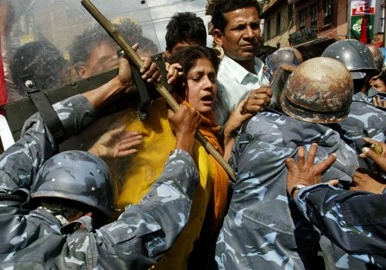
Source: Madhesi – United We Stand
Author: Kusumlata Tiwari
“My husband pulled me by the arm and tried to lock me in a room when I was getting ready to join the protest. Instead, I locked him in and went to the protest anyway,” Shaira, a Madhesi women from Nepalgunj, shared her experience of participating in the 2007 Madhesh Movement. She shared the difficulties she faced as an active woman in the movement with me. Despite the going getting tough over time, she held on to her strong political commitment. Although she was met with many challenges, she did not give up.
The movements in Madhesh since 2007 have served as an important, breakthrough pathways for the political empowerment of the Madhesi women. Their participation observably progressed from the 2007 Madesh uprising and took an entirely new shape in the form of mass protestors and prominent leadership during the 2015 Madhesh movement. In fact, it has been said that women were the backbone of the 2015 movement. When it was at its peak and brutality from security forces was at its worst, women protestors came to the front and created protective barriers to prevent largescale casualties. Rain or shine, women showed up to demonstrations and organized creative protests like Human-Chain, Chudi Julus, Jhadu Julus, Jhijhiya marches, singing folk songs, displaying folk dances, and performing theatre like Jat Jatain. These women were self- motivated, and they used their own resources individually and collectively to make the resistance movement as strong as possible. Over time, the involvement of the Madhesi women sustained the movement in the long-term. Furthermore, it also helped to solidify a Madhesi identity as a matter of pride. However, despite their struggles bring visible before anyone’s eyes observant to the movement itself, their contributions remained largely invisible in the local and national mass media. Given the deeply entrenched patriarchal core in Nepal and its Madhesi societies, this is hardly surprising.
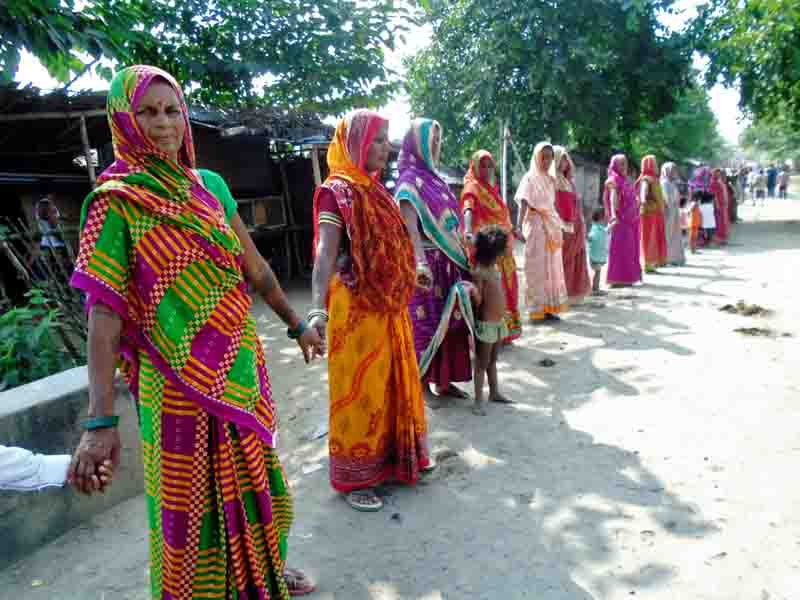
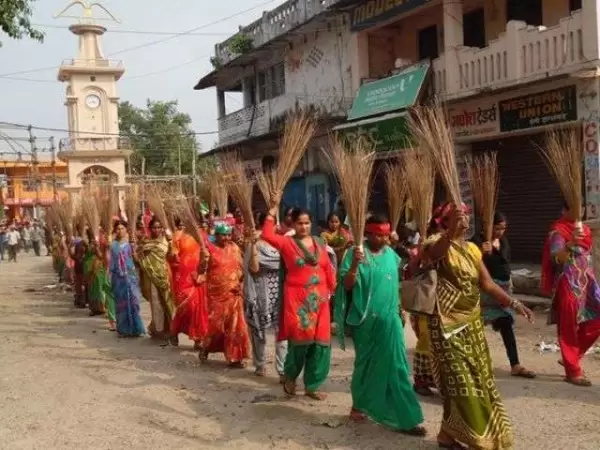
I spoke with Karima Begum, then Minister of State for Agriculture and currently a provincial parliament member in the Madesh province, during my field research in 2019. She shared with me: “I had to wake up early in the morning to complete all my household duties before I left for the demonstrations. I had to leave my children with my neighbor, and all day, I’d be thinking about my kids while I’d be participating in the protests.”
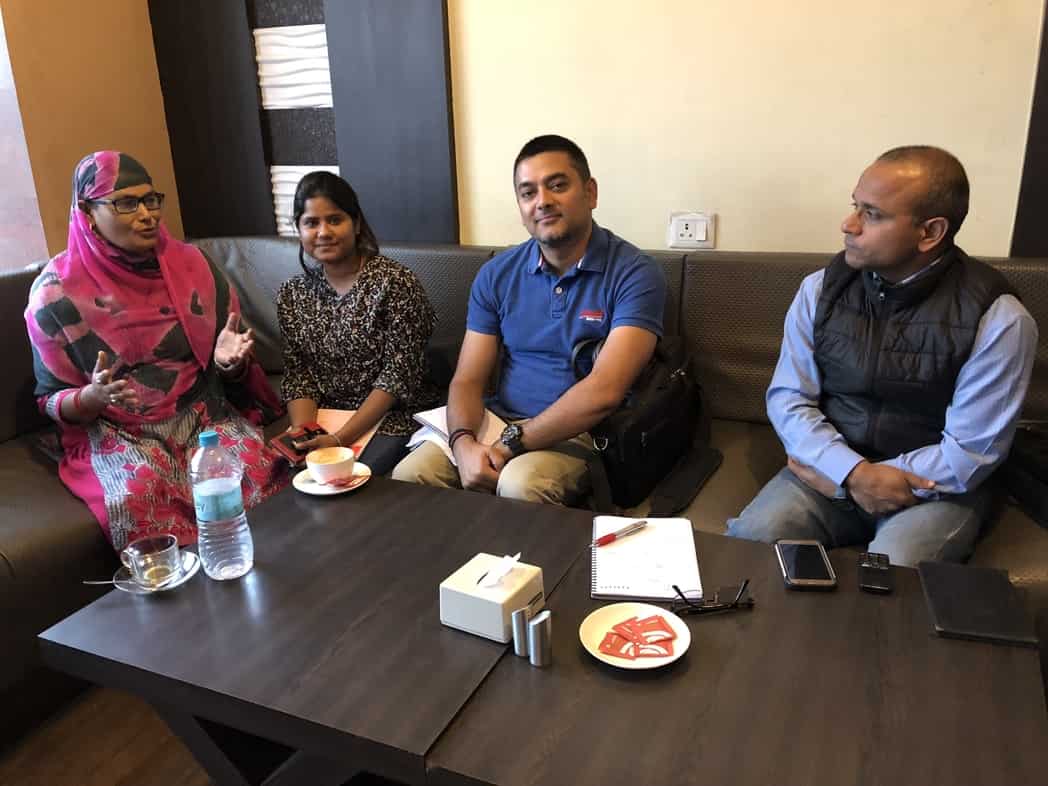
This statement alone is telling of the state of female political participation in the country. Women protestors were not able to participate in the Madhesh movement with the same level of freedom that men had. As primary caretakers of their households, many of them cooked, cleaned, and managed all their household duties before heading off to protests. Many even had to come home before sunset to fulfill their chores, or else had to face the wrath of their male relatives.
Kiran Patel (name changed to protect privacy), from Birgunj, stayed at the border overnight many nights during the movement’s blockade period. She said, “My parents and in-laws doubted my character. They accused me of having illicit relationships with other men because I stayed out in the protests at night. It was very disappointing.”
The protest sites themselves also served as locations surrounded by unique hardships faced by women protestors. Many women told me about how difficult it was to find places to excrete in, which meant that they did not drink enough water and food during the movement. The fact that most members of the Movement Mobilization Committee were men who were not willing to address these issue head on was not lost on the participants either. Still, many women preferred to prioritize participating in the movement over these concerns.
Perhaps the biggest challenge of all was that many women protestors were mentally and physically abused by the state security forces. Sarika (name changed to protect privacy) from Saptari shared, “The police used abusive language and hit me on sensitive body parts. Worst of all, our society does not like women who have spent nights in police custody, and I had to grapple with the social consequences of that.”
There were multiple cases of torture and unnecessary detentions that women were subjected to by police officers, which has continued to impact their social and professional lives even today.
Unlike men, women protestors had to contend not only with a hostile state, but also hostility towards their gender which meant that their involvement in the protests was laced with further challenges invisible to their male counterparts. Thus, the success or failure of the Madhes movement needs to be evaluated not only through a strictly political agenda, but also through the lived experiences of the women who fought for it.
During my two years of research on the Madhesh movement, I have noticed that much of the discourse surrounds the core male leaders and their contributions in the movement. Madhesi women have also played a critical role in the six-month long Madhesh movement in 2015, in the other two uprisings in 2007 and 2008 as well as in the movement against Ranas and the movement for democracy in 1990s. During the Dr K I Singh-led armed revolt against the Rana regime, Kaulpati Devi played a prominent role in the resistance. Three women protesters: Janaki Devi Yadav, Bhuwaneshwori Devi Yadav, and Sonawati Devi Yadav from Yadikuha were shot dead in Dhanusa district in their fight for the restoration of democracy in 1990. In total 10 women lost their lives during all three uprisings. In each of these isolated cases of organized uprising, or the entire movements themselves, the role played by women cannot be left understated.
Along with the resistance against the government, women also helped challenge the prevalent cultural stereotypes prevalent in Madhesh at the time. They displayed solidarity by participating in the cremation of the Martyrs of the movement and fought side by side along with their male counterparts for justice. Never in prior history had Madhesi women ever taken part in public demonstrations like they did in the 2015 Madhesh movement. Unfortunately, their contribution has not yet been recognized in the discourses on social change.
Madhesi women intercede against the long-led history of discrimination and against structural marginalization but have been overlooked in the academic, political, and social discussions surrounding such movements. They have been put into a shadow in the larger discourse of the Madesh movements. Their contributions have not yet been sufficiently understood from a feminist perspective. Their agency is only defined from the patriarchal viewpoint, explaining them a defenceless species. They are often stereotyped as illiterate, less educated, traditional, victim of patriarchy that includes ghungat, dowry and others. Over time, these imposed stereotypical images have become a defining element for the representation of Madhesi women, ignoring their assertive claims for their rights as Madhesi and Madhesi woman.
The graphics, views and opinions expressed in the piece above are solely those of the original author(s) and contributor(s). They do not necessarily represent the views of Centre for Social Change.
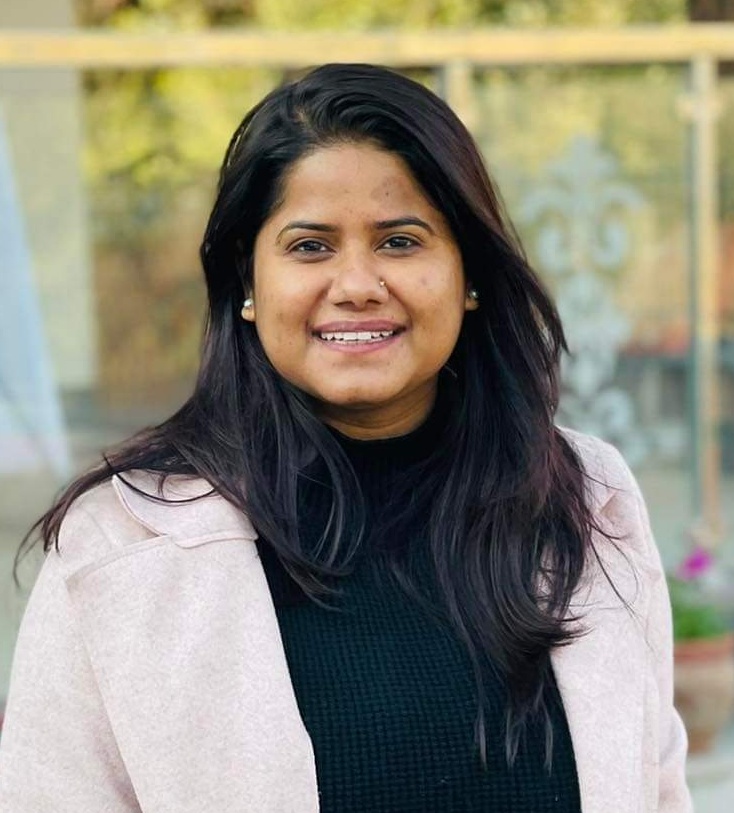
Kusumlata Tiwari is an Mphill/Phd student at the Central Department of Anthropology, Tribhuvan University. Her research focuses on the issue of Madhesi and Dalit Marginalization, Gender, Identity and Disaster Risk Reduction. She is currently engaged in two research projects: the implication of the “Beti Padhau, Beti Bachau” with Martin Chautari and “Active Citizens for Accountability and Transparency” with Samata Foundation. Previously she worked as a researcher for a collaborative research project on social movement jointly conducted by Sussex University, University College London, and Nepal Madhesh Foundation. Her research outputs appear in academic journals such as Contemporary Nepali Society and Cultural Anthropology: A Reader and Madhesh Adhyan.
©2021 Centre for Social Change, Kathmandu